A sedentary lifestyle characteristic of office workers and those who like to relax in front of the TV or behind the monitor screen often cause osteochondrosis. The first signs of this disease may occur at the age of 25 and, if left untreated, complications can have serious consequences.
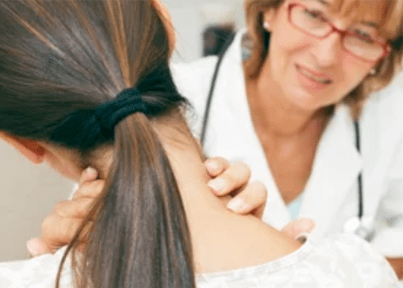
In the article we will look at what is osteochondrosis of the cervical spine, the main causes of this disease, its symptoms and stages, methods of treatment, and we will answer other questions that arise in patients with osteochondrosis.
The causes of osteochondrosis
The main causes that can cause osteochondrosis:
- malnutrition and excess weight;
- Stock disorders, scoliosis, rheumatism, flat legs;
- Study lifestyle: stuck work (drivers, office workers), lack of exercise and more. ;
- neck injuries, spinal injuries;
- Too much physical activity, unusual for the body;
- nervous tension, frequent stress;
- hereditary predisposition to the development of the disease;
- Incorrect development of the cervical spine.
Most of the above causes cause a load of the cervical vertebrae, resulting in muscle spasm. Therefore, the circulation process is impaired, the effectiveness of metabolic processes is reduced, which causes degenerative changes. The structure of the intervertebral discs changes, they are thin and deformed by talking beyond the spine.
Often the cause of osteochondrosis is a progressive disc, spread in adjacent vertebrae or bone tissue. It is most commonly found with prolonged physical activity in the lumbar and cervicals, almost never touching the breasts.
Stages of osteochondrosis development
Development, osteochondrosis goes through several stages, characterized by certain signs and symptoms. We will look at these stages below.
Osteochondrosis of the first degree of cervical region (preclinical stage)
Usually, in the initial stage of the disease, only a slight smoothing of the lordosis of the neck is observed, patients experience pain, enhancing with turns and tilting of the head, feeling tension and rapid fatigue of the muscles in the back and lower back. At this stage, osteochondrosis is cured without medication, it is sufficient to change nutrition, exercise and other events.
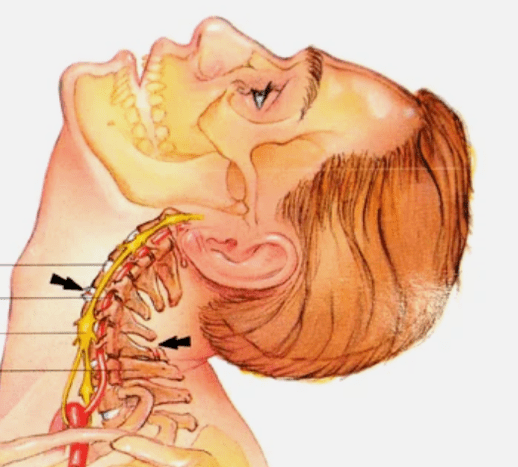
Osteochondrosis 2 degrees
In the second stage between the vertebrae there is an instability, the patient begins to disrupt the more intensive pain, which periodically gives him the hands or shoulders, the pain also increases with bends and tilting the head. This occurs as a result of nerve disorders as the height of the intervertebral discs decreases. Patients begin to notice rapid fatigue, absent, reducing the level of efficiency and headache.
Osteochondrosis 3 degrees
At this stage, the pain begins to intensify, it is constantly found not only on the neck but also in the shoulders, giving it to his hands. The muscles of the hand become greater, numbness is observed as the hernia of the intervertebral discs begin to form. In this case, the diagnosis reveals the small mobility of the cervical region. Patients are concerned about dizziness and weakness.
Osteochondrosis 4 degrees
In the last stage, the intervertebral discs are destroyed, which are replaced by connective tissue. The pathological process affects several segments of the ridge at a time, which can be at different stages of destruction. In patients there is a violation of coordination, dizziness and pain intensified, there is noise in the ear and other disorders.
Symptoms of osteochondrosis of the cervical spine
Even the initial stage of the disease can be identified according to the following features:
Headache for osteochondrosis of the cervical region
- neck pain, nape, shoulders or hands;
- Weakness of the hands;
- crunch and pain during head movements;
- General weakness, fatigue, impaired coordination, dizziness;
- Reducing the sharpness of vision and hearing, tingling tongue.
One of the most common signs is dizziness for osteochondrosis of the cervical spine. At the same time, the symptoms of dizziness can be accompanied by noise and ringing in the ears (reduced hearing acuity), sensations of disorientation, migraines, and nausea and vomiting. The treatment of dizziness for cervical osteochondrosis does not require special methods and medicines and is found in parallel with general therapy. In addition, the doctor determines how to cure these symptoms, that one should not try to get rid of dizziness with folk methods.
Another unpleasant consequence is frequent headache, especially in women. Migraines can occur several times a day, causing unpleasant and painful sensations.
The signs of the disease of the cervical region are manifested in a slightly different way than the osteochondrosis of another spine, regarding that the vertebrae in the neck are close to each other, the height of the intervertebral discs is small, leading to complications even with small degenerative changes.
Diagnosis of chondrosis of the cervical spine
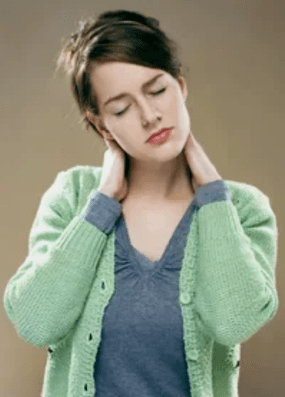
The following methods are used to diagnose the disease in medicine:
- Radiography. This method is ineffective, especially in the last stages of the development of osteochondrosis.
- Magnetic resonance imaging (MRI). A method that allows you to see bone structures, hernia of intervertebral discs, their size and direction of development.
- Computed tomography. A less effective solution than MRI, since the presence and size of hernia is difficult.
- Ultrasound duplex scan. This method is used in cases where a violation of blood flow is suspected in the arteries. Using scanning, you can determine the blood flow rate and whether there are obstacles to it.
Treatment of osteochondrosis of the cervical spine
Different methods are used to treat such a disease such as osteochondrosis: medicines, physiotherapy, massage of the cervical brotherly area for blood supply to the brain and therapeutic gymnastics and maintaining proper nutrition. It is the combination of all methods that is how to treat cervical chondrosis will achieve a real result in the fight against the disease.
Despite the fact that women are more susceptible to headache and numbness of the limbs in this disease, the treatment of cervical osteochondrosis in women is no different from its treatment in men: it is the same medicines and exercises.
First aid for severe pain
In severe pain, painkillers can be used. If the above medicines do not bring relief, NSAIDs can be taken.
Often, "distracting" agents are used, for example, an ash patch that does not cure, but only hears an inflamed area and is scattered by pain. In the case of swelling in the area of inflammation, the patient may drink an infusion of herbs or diuretic for 3-4 days. Is it possible to cure osteochondrosis with similar methods? These measures are only temporary; You should consult a doctor to treat the causes.
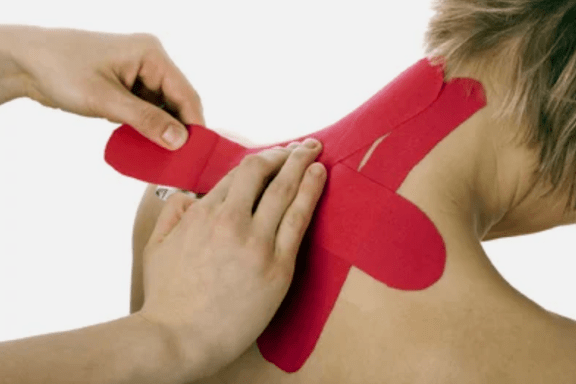
It should be noted which doctor treats osteochondrosis. If there is a suspicion that the causes of pain in the cervical spine is the appearance of osteochondrosis, you should consult a neuropathologist. It is this specialist who is engaged in this type of disease. In some medical institutions there are narrow specialists involved in accurate diseases of the spine. If your clinic has a vertebologist, you should consult the question of how to cure this disease immediately to it.
Treatment of osteochondrosis with medication
| The name of the drug group | The action of the drug | |
| Non -steroidal anti -inflammatory drugs | Reduce pain, relieve swelling and inflammation of the damaged nerve roof. | |
| A group of groups | They contribute to improving metabolic processes in nerve tissue. | |
| Chondroprotectors | Restore cartilage tissue. | |
| Drugs aimed at improving the rheological properties of blood and blood flow | Improve the blood flow to the brain and the nutrition of damaged nerve endings. | |
| Monsolelaxants | Medicines whose action is aimed at reducing muscle spasm. |
When taking osteochondrosis tablets, it should be remembered that the significant effect of tablet medicines will only be if combined with other methods, including exercises. It should also be noted that the attending physician should prescribe rather than treat the disease based on his stage and other signs.
Many doctors consider effective treatment of cervical osteochondrosis injections as this allows you to quickly affect the end of the nerves and cause a minimum of side effects. At the same time, it is better to take vitamins in the form of tablets, as there is no difference for assimilation, but the introduction of injections can be painful.
Injections used for treatment:
- Intramuscular injections cause general strengthening and anti -inflammatory effect;
- The blocks are introduced directly to the affected area, which leads to a quick effect.
Osteochondrosis exercise therapy
Therapeutic gymnastics has the maximum effect and is most convenient during recovery. When performing physiotherapy exercises, the patient should not experience pain or discomfort.
Cervical spine exercises are aimed at strengthening the neck muscles, which will not only overcome the disease, but also serve as a prophylaxis for its occurrence.
For clarity and more accurate performance, we give video of osteochondrosis exercises of the cervical spine:
Treatment of osteochondrosis of the cervical spine at home
Home treatment methods are just a complement to a complex prescribed by a doctor, and they will not help to get rid of the disease completely. Before treating osteochondrosis at home, be sure to consult a doctor to diagnose and prescribe the necessary medicines. The doctor is the one who has to determine how to treat osteochondrosis of the cervical spine at home
The house is used for treatment: recipes for traditional medicine (intended to relieve muscle pain and tension, improve blood circulation), exercises for physiotherapy, and the mandatory massage of the cervical-digging area at home.
Folk recipes to eliminate pain in the neck area:
- Attach horseradish leaves to the neck, secure it with a bandage or any breathable tissue. Before use, it is necessary to cover it with boiling water and cool to room temperature. It is advisable to introduce yourself before going to bed and leave the dressing overnight.
- Cut the potatoes fine and mix it with honey in the same proportion. The mixture will look like an ointment in a consistency. Use as a compress at least 1 time a week.
- Remove the pain from well -heated. For this purpose, you can use mustard plasters, a bag of heated sand, peppers or alcohol.
Often, patients begin to look for ways to treat or relieve pain in various forums and similar sources. It should be noted that no forum and his visitors will be able to properly diagnose the stage of the disease and the methods of treatment. The question is whether osteochondrosis is treated in your case and how it is necessary to do this, a qualified doctor should decide on the basis of diagnosis.
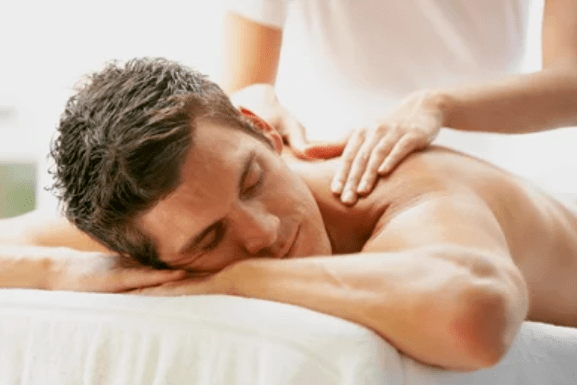
Therapeutic massage for osteochondrosis of the cervical spine
Massage is necessary to strengthen muscle tone and relieve pain. Depending on what stage osteochondrosis is, the technique of massage is chosen. Nevertheless, when they do neck massage, experts use all the techniques of classic massage: rubbing, caressing, mixing and more. In cases where the patient hurts only on one side, the massage begins in the healthy part of the neck, gradually moving in that part of the collar area where pain occurs.
Massage can be performed at home, but very carefully so as not to cause exacerbation and not harm the patient. The patient should take the position to lie down, put his forehead on his hands and stretch his chin to the chest. At the same time, the neck muscles must be completely relaxed. Prevention of Osteochondrosis of the cervical vertebrae
To prevent the onset and development of the disease, doctors recommend that you adhere to simple rules:
- sports (especially efficient swimming);
- Include in dietary products containing a large amount of magnesium and calcium (fish and other seafood, beans, peas, nuts, seeds, dairy products and cheeses, spinach, etc. , do not use spicy pepper, salty, grapes, sugar, flour products, smoked products);
- While sitting several times during the day, warm -up;
- Choose a comfortable pillow and mattress.
Making these simple recommendations can prevent you from the occurrence of osteochondrosis at any age.
The article examines the causes, symptoms and treatment of osteochondrosis of the cervical spine, ranging from medical intervention to home techniques. This disease can be cured, including without surgery, but all methods should be used for this: take medication, exercise and do a massage.



































